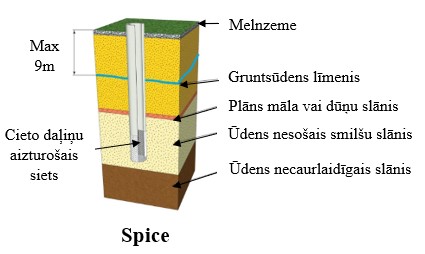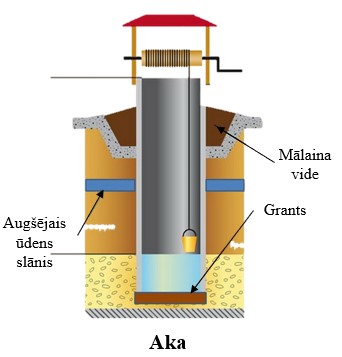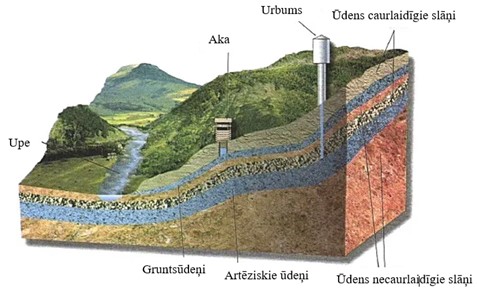


Solutions
Purification of well or tap water
The water source of the well and the well is the same - groundwater, but the specifics of their construction are different.


The source of water intake for wells and taps is groundwater, which forms the first permanent underground aquifer, where the water pressure is equal to the atmospheric pressure. Šo water supplies are replenished thanks to the infiltration of atmospheric precipitation. This indicates that the groundwater level is directly dependent on climate changes, precipitation and air temperature. Šie factors are constantly variable quantities determined by seasonal or annual climate characteristics. Due to this, it can be concluded that the groundwater level fluctuates over time and its changes are uneven. The groundwater level is an important aspect that shows whether a well or a well is profitable and useful to build.
Another factor that determines the groundwater level is the lithological composition of the rocks and the degree of drainage of the territory. In sandy areas, groundwater levels fluctuate faster than in clayey soils. In cities, due to the large population, the groundwater level can change due to intensive consumption of drinking water, in the vicinity of construction material quarries, water reservoirs, drainage systems and other objects.
Quality fluctuations in different places and regions depend on environmental pollution, for example pollution caused by agricultural activities, uncontrolled discharge of domestic and industrial wastewater into the soil, landfills. Therefore, it is important to control and protect groundwater from environmental pollutants. The amount of water available for infiltration from precipitation or wastewater is the primary factor in the transport of pollutants into groundwater sources through the soil. Water from the surface passes down through the unsaturated zone and diffuses into the aquifer in a manner dependent on site conditions. Contaminant dispersion is both physically affected by soil porosity and the hydraulic rate of water movement. Generally, groundwater is characterized by an increased content of organic substances, concentrations of iron, manganese, phenol, ammonium, a high content of permanganate index or oxidizability, as well as microbiological pollution. The soil and water permeable layer can also be considered as a reactive filter capable of retaining or even separating pollutants from the water source.

The quality of groundwater is better than the quality of surface water, but it also does not meet the requirements of drinking water, so you need to provide a suitable filtration system for your well water.
The cost of building a well or a well is not high, but it has a limited amount of water, so it is practical to use it for private houses, but for a larger number of consumers, such as industrial needs, camping, multi-apartment buildings, a well or a well will not be able to provide enough water. amount of water.
When choosing the most suitable water purification system for your well or tap water, we recommend performing water testing to our specialists evaluate and provide the best solution for the purification of your drinking water.









 This is a good choice!
This is a good choice!